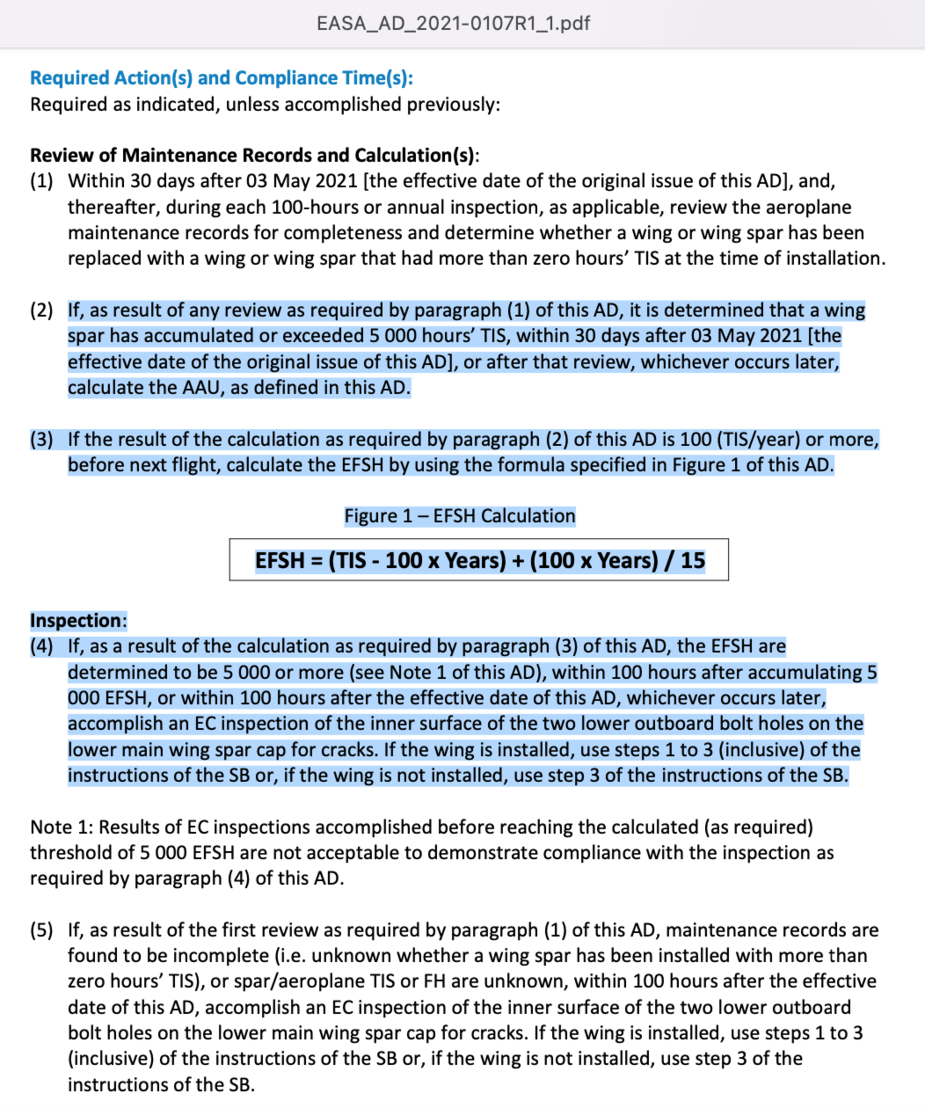There was a forumite with an Aztec at Wellesbourne, hopefully they are all alright.
The Arrow II would have been inspected by now using an eddy current. I would be surprised there was a structural failure after the amount of testing done by the fleet, not least an in flight break up would, unfortunately, have resulted in debris on the sea surface.
Peter_G wrote:
One issue which hasn’t – as far as I know – been raised as a possible factor is the FAA AD Spar Check for PA 28.
We (pilots) always like to use external factors to explain, why when one can easily explain it using bank angle & aircraft speed? I doubt PA28 will ever break up in such turbulence without losing control? one has to pull hard on stick and bank a lot to bend the wings or fly never exceed speed to lose them…
If not sitting on 90kts+/-30kts with right side up the aircraft will lose it’s wings irrespective of AD Spar checks…if control is lost structural strength is less relevant, what matters is good penetration speeds & attitude and hope for the best (the flimsy plastic & wooden gliders do cope with lot of turbulence in convective clouds or windy terrain, I am sure any certified IFR aircraft would perform better assuming the pilot has the mental state to keep it at 4deg-6deg AoA all the time)
I doubt PA28 will ever break up in such turbulence without losing control? one has to pull hard on stick and bank a lot to bend the wings or fly never exceed speed to lose them…
I don’t understand what that is trying to say.
Of course you can break up without losing control. You can break up in straight and level cruise. That is the basic idea behind Va.
Isn’t the basic idea of Va is to keep AoA controlled near 4deg? not at -1deg and not at +14deg
We should note that the gust factor for these aircraft used in certification, is only 30 fps, which is moderate turbulence in a SigWx context. Also the envelope shrinks by around 30% if loads are asymmetric (ie not in one axis only).
In effect Va, which is a function of Vs, which in turn is related to mass, is providing protection mainly in the lateral axis (pitch).
Eckalbar (in his book on the Bonanza) goes into some detail on the FAA process for establishing the gust/load envelope.
No. Flying below Va is to ensure that the wing stalls (and sheds lift) before it exceeds its strength
I am sure we are talking about the same things? if max AoA is 16deg and max G for certification in turbulence and gusts is +4G (3.8G to be more precise for IFR SEP), you should fly your aircraft no less than 4deg in 1G (16/4 assuming linear Lift to Alpha) and no more than 16deg in 1G (although it’s risky to stall at VS) before hitting turbulences or gusts, that is how Va speed is set at 1G
You can use the above reasoning to understand how Va changes with weight or in loaded turn as it’s not obvious 
Just simplifying things 
https://www.planeandpilotmag.com/article/understanding-maneuvering-speed/
Ibra wrote:
I am sure we are talking about the same things? if max AoA is 16deg and max G for certification in turbulence and gusts is +4G (3.8G to be more precise), you should fly your aircraft no less than 4deg in 1G (16/4 assuming linear Lift to Alpha) and no more than 16deg in 1G (although it’s risky to stall at VS) before hitting turbulences or gusts, that is how Va speed is set at 1G
In your example, Va would give an AoA of exactly 4°. (Assuming positive load on the wings is the only factor determining Va, which it isn’t.)
RobertL18C wrote:
The Arrow II would have been inspected by now using an eddy current. I would be surprised there was a structural failure after the amount of testing done by the fleet
Many will not have an eddy current inspection carried out for many years to come. https://ad.easa.europa.eu/blob/EASA_AD_2021_0107_R1.pdf/AD_2021-0107R1_1

@Snoopy my Warrior is low time and never used in training, but I still carried out the inspection.
At least in the UK most, if not all, the active fleet has been inspected. Why wouldn’t you?